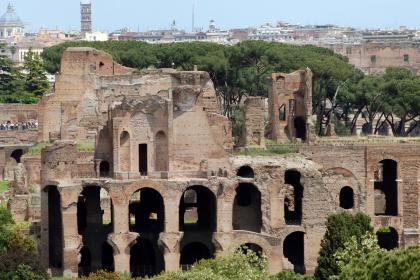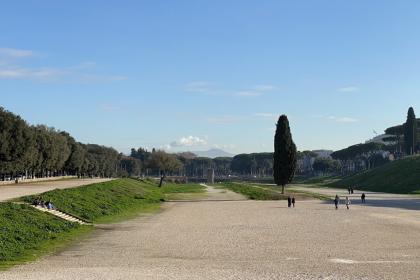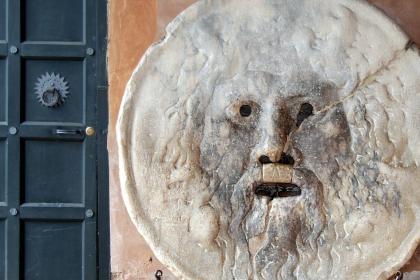
Located at the foot of the Palatine hill, strategically positioned between the Roman Forum and the Circus Maximus, it is one of the oldest titular churches in the capital, despite its Baroque exterior and 18th-century interior. Probably built in the first decades of the 4th century, it stands on pre-existing Roman architecture – tabernae and private buildings that occupied a street on the southwestern slopes of the Palatine. In the oldest documents it is recorded as titulus Anastasiae, perhaps referring to the “Anastasis” (Greek for Resurrection) rather than to the saint whose name first appears in the Synod of 499. The basilica is linked by tradition to the preaching of St. Jerome and St. Leo the Great.
The church was restored several times over the centuries: the modern church owes its forms to Pope Urban VIII Barberini, who ordered its restoration in 1636. Further restorations were commissioned in the 19th century by Pope Pius VII and Pope Pius IX. Simple in appearance, the basilica’s exterior features two orders flanked by twin bell towers. The three-aisled interior holds Michelangelo Cerruti’s Martyrdom of St. Anastasia on the coffered ceiling and Pier Francesco Mola’s 17th-century painting of St. John the Baptist in the Desert. Under the altar is the lying statue of St. Anastasia, a seventeenth-century Bernini-inspired work. In a vaulted room, a 17th-century reliquary holds the precious relics of St. Joseph's cloak and part of the Virgin's veil: tradition has it that they came from Jerusalem and were brought to Rome by St. Jerome.
Until the 18th century, the church was the starting point of the penitential procession that was presided over by the pontiff on Ash Wednesday and ended at the Basilica of Santa Sabina, where the first stationary mass of Lent was celebrated.
The Roman Forum and the Palatine

 Condividi
Condividi
Circus Maximus

 Condividi
Condividi
The Mouth of Truth

 Condividi
Condividi
Information
For the timetable of the masses and visiting conditions, please consult the contacts.
 Condividi
Condividi
Location
To find out about all accessibility services, visit the Rome accessible section.











































